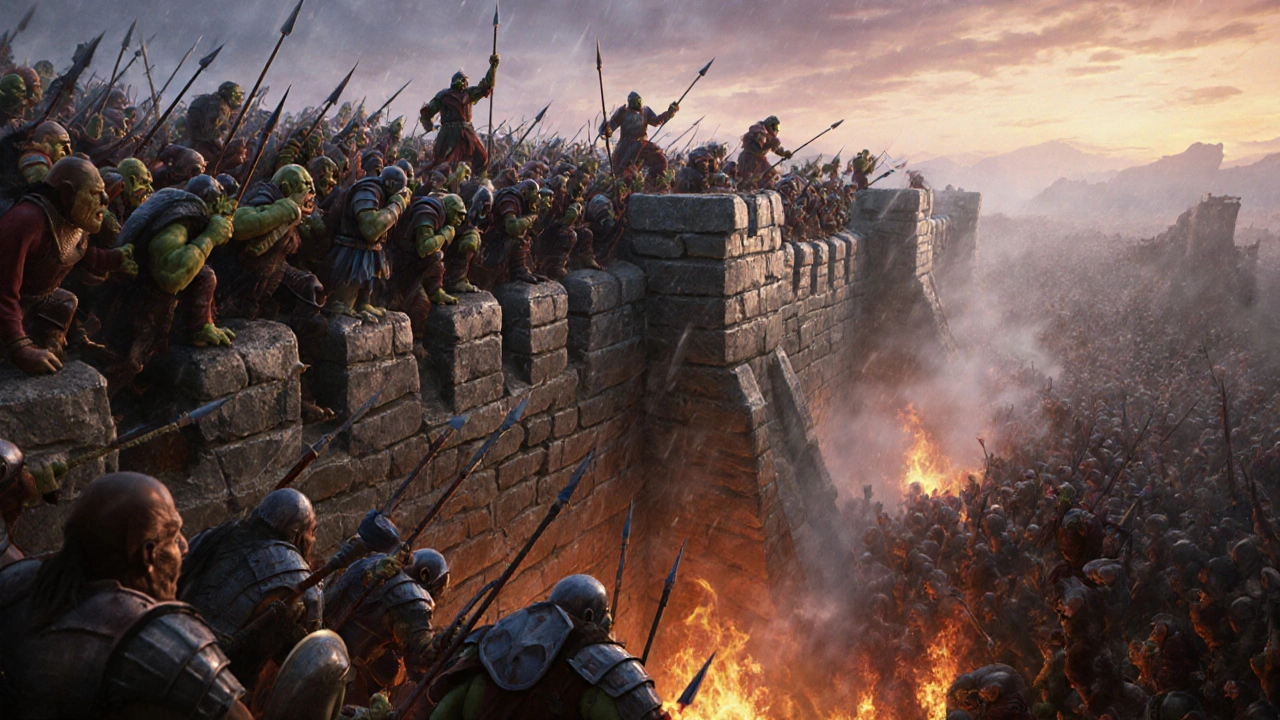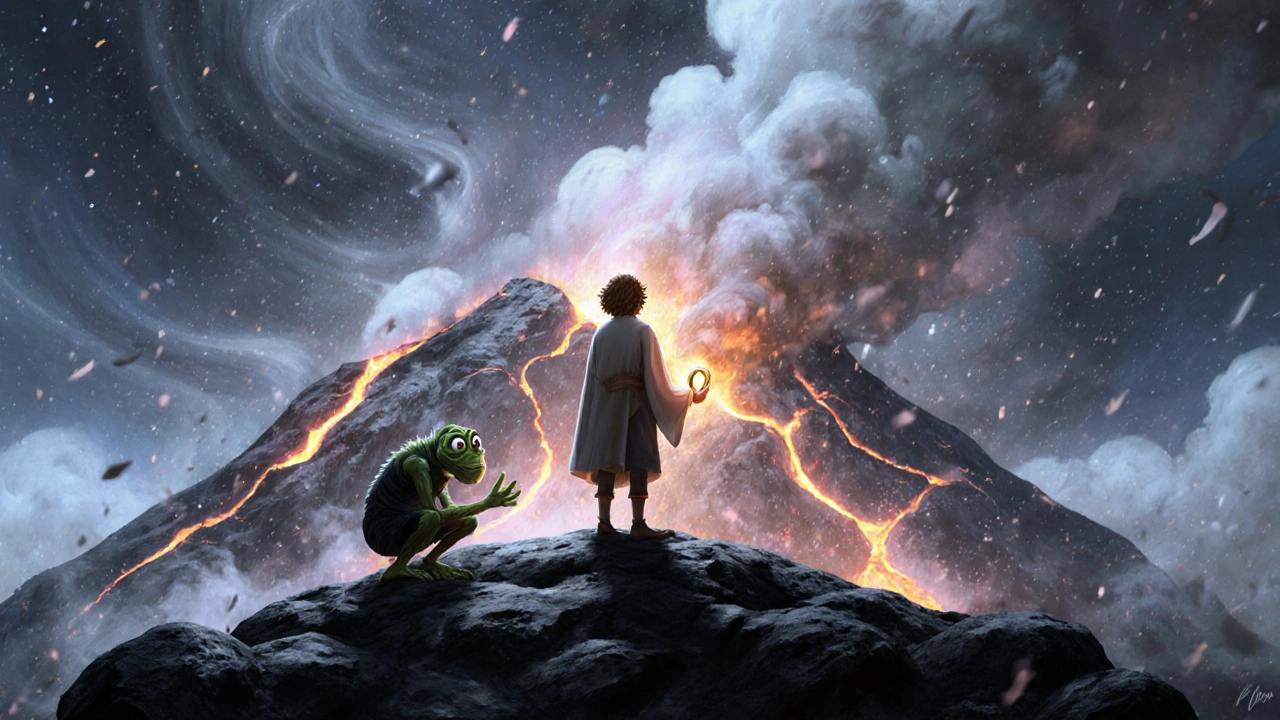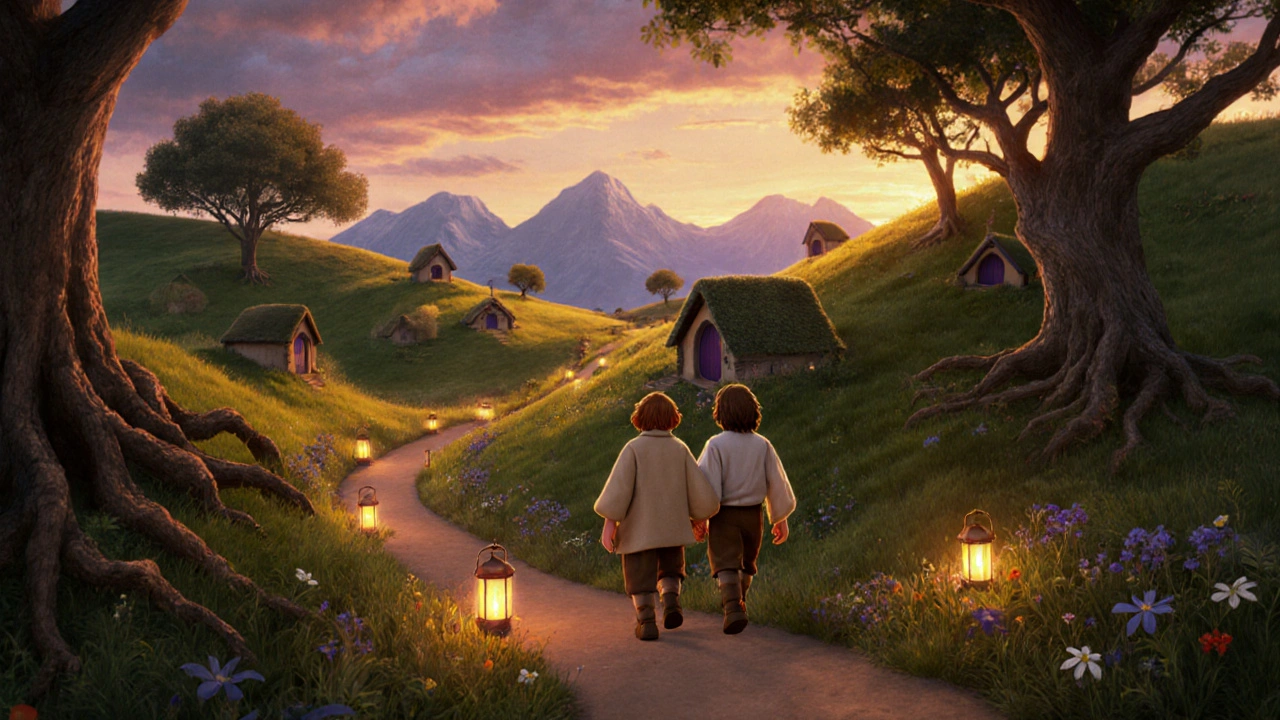The Lord of the Rings trilogy isn’t just a series of movies-it’s a cinematic landmark that redefined what fantasy could look like on screen. Released between 2001 and 2003, these three films didn’t just adapt J.R.R. Tolkien’s books. They rebuilt the world of Middle-earth from the ground up, with practical sets, real landscapes, handmade armor, and digital innovation that still holds up today. No other fantasy film series has matched its blend of emotional depth, technical mastery, and sheer scale. And two decades later, it still feels alive.
It Wasn’t Just a Book Adaptation-It Was a Rebirth
Before Peter Jackson stepped in, fantasy films were either cheaply made B-movies or overly cartoonish. The 1977 animated version of The Hobbit was charming, but it didn’t feel real. The Sword of Shannara (1977) bombed with critics and audiences alike. Even George Lucas’s early Star Wars films, while groundbreaking, leaned into space opera, not mythic storytelling. Jackson didn’t just film Tolkien’s story-he treated it like sacred text. He spent years studying every footnote, every map, every poem. The result? A trilogy that kept 94% of the core plot from the books, according to Middle-earth scholar Dr. Kristin Thompson. That’s rare. Most adaptations cut, change, or simplify. Jackson added layers. He gave Aragorn’s quiet doubt, Frodo’s growing burden, Sam’s unwavering loyalty-all the quiet moments that make the epic feel human.Real Places, Real Craft, Real Magic
Forget green screens. Jackson shot in New Zealand’s wild mountains, forests, and rivers. Over 46 real locations became Helm’s Deep, Rivendell, Mordor, and the Shire. They didn’t build sets in studios-they built them in the earth. The production team constructed 150 sets, from the grand halls of Minas Tirith to the tiny hobbit holes of Bag End. Each one had real wood, real stone, real weathering. Weta Workshop didn’t just design props-they made them. For the Battle of Helm’s Deep alone, they forged 48,000 weapons and 10,000 pieces of armor. Every sword, every shield, every helmet was hand-finished. Gollum’s voice? Not one actor. It was 37 audio layers mixed through an Eventide H3000 effects unit. The sound of hiss, wet breath, whisper, and rage? Real. Not synthesized. That’s why Gollum still feels alive today, even when compared to modern CGI characters.Technology That Changed Hollywood Forever
The trilogy didn’t just use CGI-it pushed it into a new era. Weta Digital created Massive software to simulate entire armies. For the Battle of the Pelennor Fields, they generated 200,000 unique digital soldiers, each with their own AI-driven behavior. No two orcs moved the same way. No two elves fell the same way. That level of detail was unheard of. Cinematographer Andrew Lesnie shot parts of the films on 65mm film-the same format used for Lawrence of Arabia. The result? Images so clear you can see the sweat on Frodo’s brow, the dirt under Sam’s fingernails, the crackle of fire in the Mines of Moria. Only 15% of the film’s visuals were digital. The rest? Real fire, real rain, real horses, real actors. That’s why the trilogy ages better than most modern blockbusters. The effects don’t look dated-they look timeless.
The Numbers Don’t Lie
The trilogy cost $281 million to make. It earned nearly $3 billion worldwide. That’s not just success-it’s dominance. At the time, it was the highest-grossing film series ever. Each film averaged $999 million. Compare that to the Star Wars prequels, which averaged $797 million. And unlike Star Wars, which relied on nostalgia and merchandising, LOTR earned its numbers through pure storytelling. Critics loved it too. The Fellowship of the Ring holds a 91% rating on Rotten Tomatoes. The Two Towers hit 96%. The Return of the King scored 93%. Roger Ebert gave all three perfect four-star reviews. Peter Travers called the finale “the most satisfying conclusion to a trilogy in cinema history.” And the Oscars? The Return of the King won 11, tying with Titanic and Ben-Hur for the most in history. Best Picture. Best Director. Best Adapted Screenplay. Best Visual Effects. It swept everything.It’s Not Perfect-But That’s Why It’s Real
No masterpiece is flawless. Some critics argue the ending drags. The last 40 minutes of The Return of the King feel slow. Merry and Pippin’s comic relief sometimes feels forced. One Reddit thread from 2022 had 1,800 comments, and 23% of negative Amazon reviews complained about “annoying hobbit antics.” Fair point. But here’s the thing: those moments don’t break the story-they ground it. Tolkien wrote about ordinary people caught in extraordinary times. Merry and Pippin aren’t heroes. They’re kids who got lost in a war. Their clumsiness makes the triumph feel earned. The slow ending? That’s not bloat. That’s grief. That’s exhaustion. That’s the cost of victory. Jackson didn’t rush the ending-he honored it.
Why People Keep Watching It
On IMDb, the trilogy has over 8 million user reviews. The ratings? 8.8, 8.7, and 9.0. That’s not a fluke. It’s consistency. A 2022 Statista survey found that 78% of fantasy fans have watched all three films at least twice. Compare that to 42% for other franchises. Why? Because it rewards rewatching. First time? You’re caught up in the action. Second time? You notice Aragorn’s hesitation before he takes the crown. Third time? You hear the subtle leitmotif in the score that tells you Frodo’s soul is fading. The trilogy is layered like a novel. You don’t get it all at once. You grow into it. And then there’s the extended editions. Add 125 extra minutes across all three films, and you get scenes that deepen every character. The conversation between Gandalf and Galadriel in Lothlórien. Éowyn’s quiet grief before she rides into battle. Faramir’s internal struggle. These aren’t extras-they’re essential.Its Legacy Is Everywhere
You can’t talk about modern fantasy without talking about LOTR. Marvel’s cinematic universe? Kevin Feige admitted Jackson showed them how to build a trilogy with emotional continuity. Amazon’s The Rings of Power? Its $465 million budget? That’s because Jackson proved the market existed. New Zealand tourism jumped from 1.2 million LOTR-related visitors in 2002 to 3.7 million by 2012. Fans still hike to Mount Doom, stand in the Shire, and take guided tours of the filming locations. The trilogy didn’t just make money-it created a pilgrimage. Even the remastering matters. In 2021, the trilogy was upgraded to 4K HDR. Sales hit 2.3 million units by the end of 2022. That’s not nostalgia. That’s demand. People aren’t just watching it-they’re buying it again.What It Means Today
In 2025, we’re surrounded by flashy, fast-paced, disposable blockbusters. Movies that rely on explosions, memes, and cameos. The Lord of the Rings trilogy stands apart because it asks for patience. It asks you to care. To sit with silence. To feel the weight of a ring, the cost of a kingdom, the quiet courage of a hobbit who just wants to go home. It’s not just the best fantasy film series ever made. It’s one of the greatest cinematic achievements of all time. Not because it had the most money. Not because it had the most effects. But because it had the most heart. If you’ve never watched it, start tonight. Don’t skip the extended editions. Don’t watch it on your phone. Sit down. Turn off the lights. Let it breathe. You won’t just watch a movie. You’ll enter a world that still lives.Is the Lord of the Rings trilogy worth watching in 2025?
Absolutely. Even with today’s advanced CGI, the trilogy’s practical effects, emotional storytelling, and character depth still outshine most modern fantasy films. It’s not just a relic-it’s a benchmark. Viewers who watch it now often say it feels more real than anything released in the last decade.
Should I watch the theatrical or extended editions?
Start with the theatrical cuts if you’re new-they’re tight and powerful. But if you fall in love with the story, go straight to the extended editions. They add 125 minutes of essential character moments, world-building, and emotional depth. The extended version of The Return of the King alone adds 57 minutes that transform the ending from bittersweet to profoundly moving.
How long does it take to watch the entire trilogy?
The theatrical versions total 9 hours and 18 minutes. The extended editions run 11 hours and 23 minutes. That’s longer than most TV seasons, but the pacing rewards the time. Many fans spread it out over a week-watch one film per night with a day off between. It’s not a marathon. It’s a journey.
Why does Gollum still feel so real today?
Andy Serkis’s performance was captured with motion capture, but it was grounded in real emotion. His voice wasn’t just altered-it was layered with 37 different audio tracks to create the split personality. The animators studied real animals, human psychology, and even stuttering speech patterns. The result? A character who feels broken, not digital. That’s why he still haunts viewers 20 years later.
Did the trilogy influence other fantasy franchises?
Yes, profoundly. Marvel’s MCU took notes on how to build a connected universe with emotional stakes. The Witcher, Game of Thrones, and The Rings of Power all borrowed its tone, scale, and commitment to world-building. Even video games like The Elder Scrolls and Dark Souls owe their atmosphere to LOTR’s blend of myth and grit. It didn’t just inspire-it set the standard.

